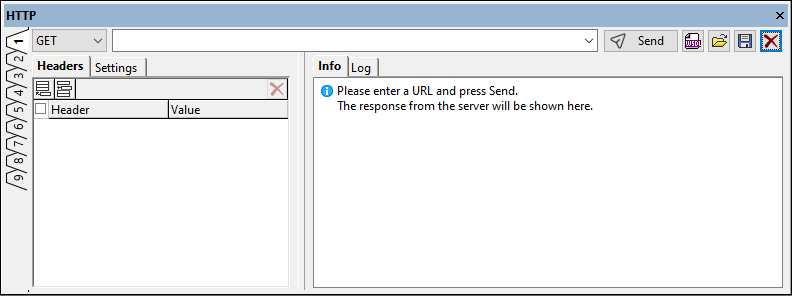HTTP
HTTP (Hypertext Transfer Protocol) is the protocol (or set of rules) that defines how files (text, images, audio, video, and other multimedia files) are transmitted over the Internet. Every web server runs a program (known as a daemon) that continuously waits for HTTP requests and handles each as it arrives. For example, when you visit a website's home page, your browser sends an HTTP command to the website's web server that requests the download of the home page; the server's HTTP daemon receives the request and sends the requested page. One significant property of HTTP bears noting: that it is stateless, which means that each HTTP command is carried out independently, without any reference to previous or following commands.
In XMLSpy, you can test HTTP commands in the HTTP output window (screenshot below). Here you can create and send an HTTP request to a web server, and receive and check the response.
Parts of the HTTP output window
The HTTP output window has nine tabs (see screenshot below). You can store a separate request in each tab, and switch between tabs. After creating a request in the window, you can send the request by clicking the Send button. The response is displayed directly in the window.

The window consists of the following parts:
•At the top: (i) a combo box in which to select the HTTP method you want to use; (ii) an entry field for the URL of the web server; (iii) buttons related to the execution of HTTP requests (Send, Import, and Reset).
•A left-hand pane for creating the request.
•A right-hand pane for displaying information and logging information about the request.
How the HTTP output window works is described in the sub-sections of this section.